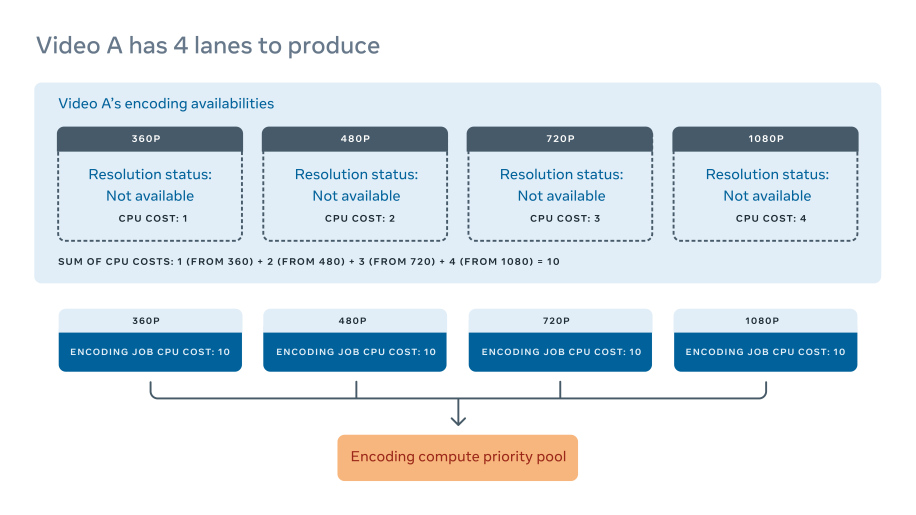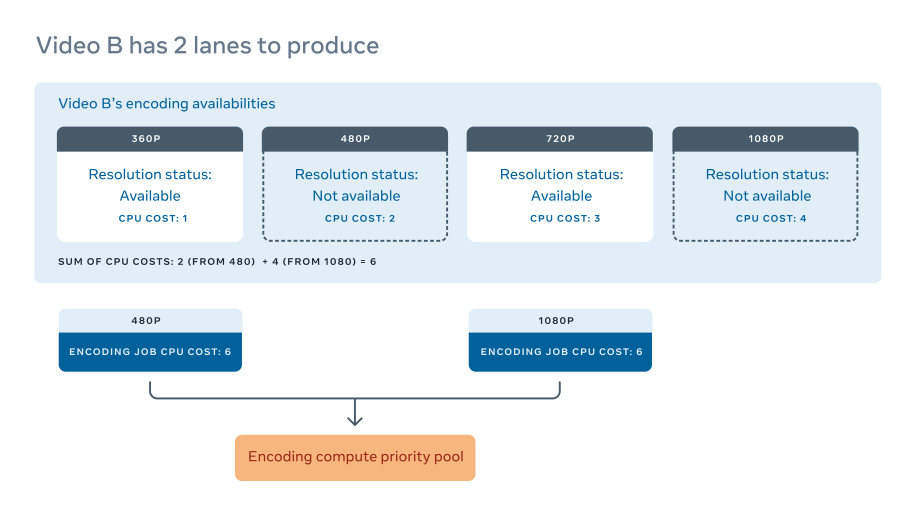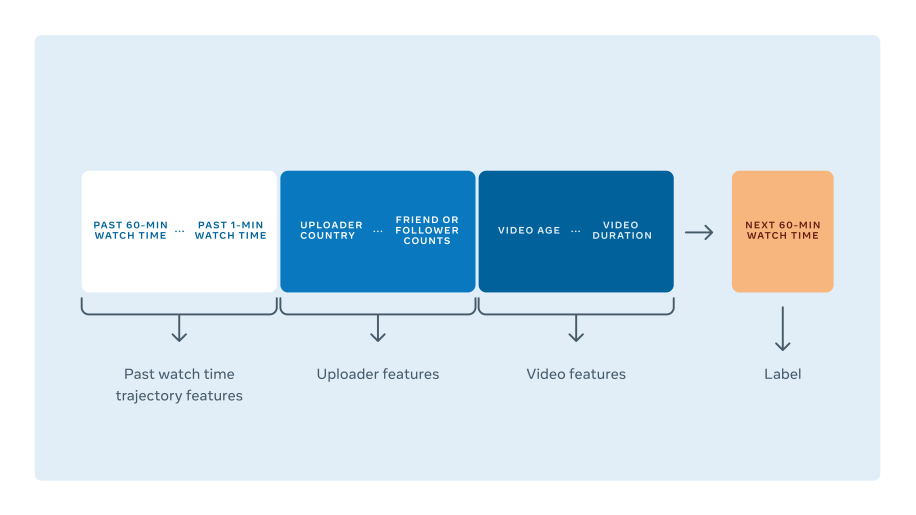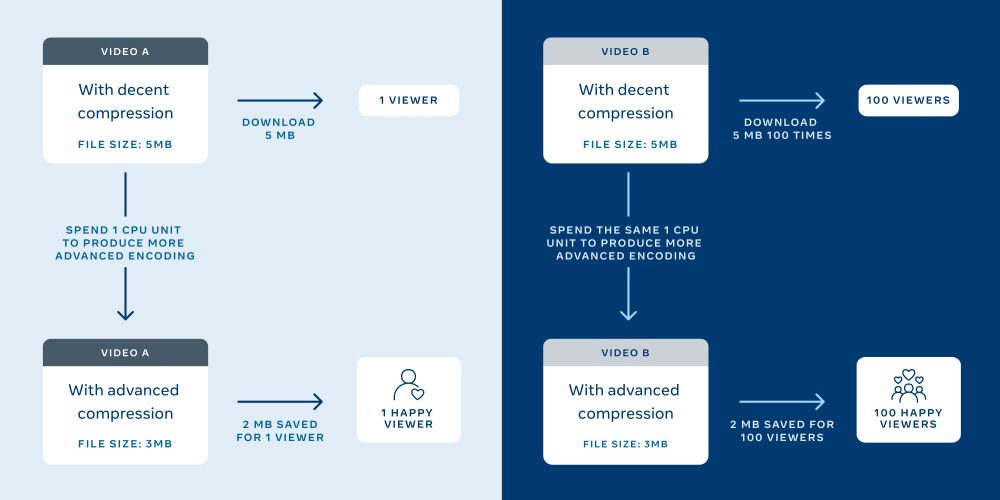
There are hundreds of millions of videos posted on Facebook every day. However, if you want to be able to deliver all your videos at the highest quality and resolution with as little buffering as possible, you should encode them using the best codec settings for your video. Facebook is eye-catching with Facebook Engineering explaining a new method it is taking to optimize video encoding.
When a video is uploaded on Facebook, encoding starts in various resolutions such as 360p, 480p, 720p, and 1080p depending on the average bit rate. In this case, the computational power required for compression efficiency and visual video quality changes according to the codec and settings used.
Of course, since it is not possible to encode a large amount of video at the same time, the video processing queue has a priority and proceeds in order. It is said that this priority was first determined by various factors such as the total duration of the video, the content of the video, and the number of friends and followers who uploaded the video. Facebook was trying to optimize the user experience by properly allocating video encoding priorities.


However, Facebook admits that this method has its drawbacks. Because video codecs and their settings are new every day, video coding patterns are so vast that it is impossible to completely optimize the user experience.
In addition, Facebook points out that there is a bias in the video consumption pattern on Facebook. For example, if you compare the Facebook page of a large company such as Disney with the Facebook page of a general small and medium-sized video blogger, Disney will inevitably increase its priority because the total duration of the video is overwhelmingly longer even though the number of video uploads is less than that of Vlogger. However, if you prioritize pages with intense video consumption, you will be ignoring support for small producers.
Therefore, Facebook says it has introduced a cost-benefit model for video encoding with the aim of quickly encoding uploaded videos in high quality. Facebook defined profits, costs, and priorities in this way. The profit is fixed quality, the relative compression efficiency of the encoding product group × the effective estimated total playback time, the cost is the encoding calculation cost missing from the product family, and the priority is profit / cost.
A set of encoding files that can be delivered along with the encoding suite, for example H.264 360p and 480p, 720p and 1080p, can be said to constitute one encoding suite. And compression efficiency shows how many minutes the video playback time is when a 1GB video is encoded in a specific codec setting.

The correct predicted total playing time is an estimate of the total playing time of a video according to a machine learning model. This shows how much the encoded video can be played on the device. For example, assuming that 20% of devices that want to play a video with a predicted total duration of 100 hours cannot play a video encoded with VP9, the effective predicted duration of a video encoded in widely common H.264 is 100 hours and encoded with VP9. It is 80 hours.
The machine learning model predicts the total playing time based on the judgment of video uploads, the number of friends and followers, the average total playing time of videos uploaded so far, and the past popularity in the video metadata platform. According to Facebook, the past total play time data is the best predictor in the video total play time prediction. It is also said that the total playing time changes significantly depending on whether it is a story video of a few seconds or a live broadcast by hours.
By adopting a new method of calculating priority using a machine learning model, video uploaded to Facebook can be encoded more efficiently than before. As a result, Facebook says it has made it easier to continue investing in newer and more advanced codecs to provide the highest quality video experience for Facebook users. Related information can be found here.


















Add comment